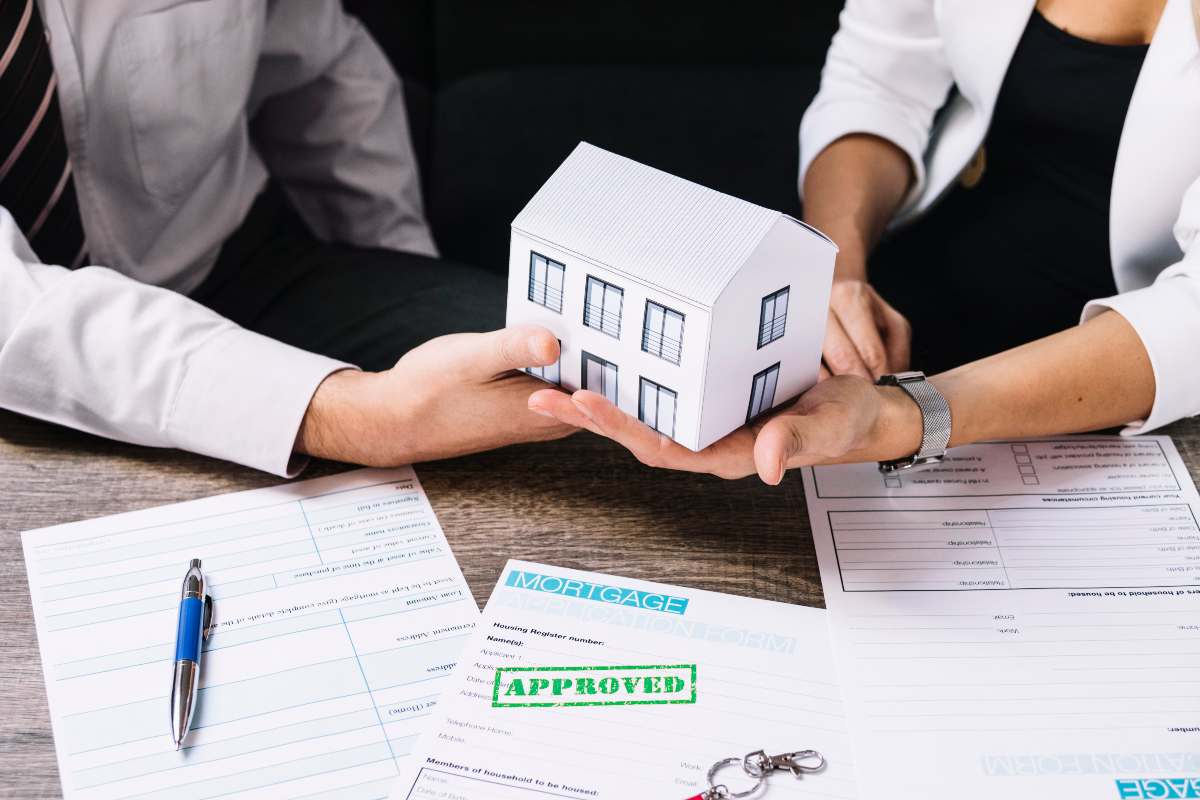
What is a sale and leaseback Commercial Property?
Are you a property buyer looking to finance in commercial space or a business owner considering ways to unlock capital from your property assets? Understanding sale and leaseback commercial property transactions can be a game-changer. This financial strategy benefits buyers and sellers by combining property ownership with continued usage, offering flexibility, cash flow, and investment opportunities.
What Is Sale and Leaseback in Commercial Real Estate?
A sale and leaseback arrangement is a unique real estate transaction where a commercial property owner sells the asset to a buyer but immediately leases it back. This means the seller continues to occupy and operate from the property as a tenant while the buyer becomes the landlord and collects rental income.
This setup allows the original owner to free up capital locked in their property without disrupting business operations. Simultaneously, buyers benefit from stable, long-term rental income, often backed by a reliable tenant.
How Does Sale and Leaseback Work?
In a typical sale and leaseback deal, the seller transfers ownership of the commercial property to the buyer at an agreed-upon price. Immediately after, a lease agreement is signed, and the seller leases the property back for a specified term, usually on an operating lease basis.
In some cases, the buyer may grant the seller an option to repurchase the property at a predetermined price within a future timeframe, adding flexibility to the seller’s business planning.
Key considerations:
- The seller must be the freeholder or have a virtual freehold.
- Leaseholders may sometimes wish to sublease; specialized legal advice is crucial before transfer.
- Both parties should seek legal and financial counsel to ensure the lease terms suit their goals.
Why Do Businesses Opt for Sale and Leaseback?
Businesses choose sale and leaseback agreements for several strategic reasons:
- Raise Capital for Growth: Property selling can generate immediate funds for expanding operations or improving land and facilities.
- Improve Cash Flow: Business owners who cannot afford expensive renovations or need quick cash to maintain daily operations will greatly benefit from this.
- Manage Debts: It helps reduce business or personal debts by releasing capital tied up in property.
- Access Long-Term Premises: When a landlord sells a property, tenants may lease back to maintain continuity without disruption.
- Retirement Planning: Owners planning to wind down operations might sell early to bolster pension funds while still running the business.
Benefits of Sale and Leaseback for Buyers (Lessors)
Investing in the sale and leaseback of commercial properties shows a wealth of advantages for buyers:
- Steady Rental Income: Buyers (lessors) receive consistent rent payments from the original owner (lessee), creating a dependable revenue stream.
- Immediate Cash Generation: Purchasing an income-generating asset provides immediate returns, which can be reinvested or used to service debt.
- Reduced Management Burden: Usually, the lease agreement includes an “all repairing lease,” meaning tenants handle maintenance and repairs, reducing the landlord’s responsibilities.
- Improved Financial Ratios: Owning income-producing property enhances the lessor’s balance sheet, improving debt-to-equity ratios and attracting further investment.
- Greater Investment Flexibility: Cash freed from sale proceeds can fund new acquisitions or other ventures, adapting to changing market conditions.
Who Are the Typical Buyers in Sale and Leaseback Deals?
According to a December 2022 study by the National Association of Property Buyers (NAPB), the typical buyer in sale and leaseback transactions is:
- Male, aged over 55.
- Pension funds are often used as an investment source.
- Investing an average of around £450,000 per deal.
Interestingly, 13% of buyers receive loans from the seller, usually at below-market rates, particularly when sellers face financial distress.
Buyers in this market are savvy investors looking for properties with stable tenants—businesses seeking to unlock capital while maintaining operational premises.
Who Are the Typical Sellers in Sale and Leaseback Transactions?

Sellers are usually business owners or companies who want to:
- Access cash quickly to support day-to-day operations.
- Avoid costly bank loans or restrictive financing terms.
- Invest back into the business, often with agreements to repurchase the property later at a higher price.
- Secure funds for retirement while continuing to operate from their premises.
By selling and leasing back, sellers reduce capital tied in real estate but retain essential business space, maintaining operational continuity.
What Types of Companies and Properties Are Suitable for Sale and Leaseback?
Sale and leaseback arrangements are ideal for companies that:
- Own commercial properties such as office constructions, retail units, warehouses, or industrial spaces.
- Need capital injection without relocation disruption.
- Operate in locations with strong occupancy rates and good market demand.
- Have a stable financial position, solid trading history, and a healthy balance sheet.
Properties do not always have to be in perfect condition, but their state will influence the purchase price and lease terms.
Step-by-Step Guide to a Sale and Leaseback Transaction
Navigating a sale and leaseback transaction involves several critical steps:
- Seek Professional Advice: Engage experienced commercial property lawyers and financial advisors early to protect your interests.
- Property Valuation and Negotiation: Determine the property’s fair market value and agree on the purchase price, lease term, and rent.
- Legal Due Diligence: Verify ownership status and confirm that the lease agreement meets both parties’ requirements.
- Lease Agreement Drafting: Ensure lease terms include responsibilities, repair obligations, rent review clauses, and exit options.
- Completion and Transfer: Finalize the sale and leaseback, transferring ownership to the buyer and occupancy rights to the seller as tenant.
- Financial and Tax Planning: Assess tax implications such as VAT, capital gains, and potential impacts on company valuation.
Understanding the Financial and Tax Implications
Sale and leaseback transactions can have complex tax consequences for property sellers and buyers. Common considerations include:
- VAT charges and reclaiming procedures.
- Impact on company financial statements and creditworthiness.
- Potential capital gains tax liabilities.
- Treatment of lease payments as operating expenses.
Always consult tax professionals to structure the deal favourably and comply with regulations.
Potential Disadvantages of Sale and Leaseback
While advantageous, sale and leaseback agreements come with some trade-offs:
- Higher Rent Payments: Rent can increase over time, potentially straining company finances.
- Loss of Asset Control: Sellers no longer own the property and lose control over future use or sale.
- Impact on Company Valuation: Investors may perceive removing property assets from the balance sheet negatively.
- VAT and Legal Costs: Additional transaction costs and complexities may arise.
- Market Risks: Economic uncertainties, like those heightened by the COVID-19 pandemic, make investors cautious, possibly affecting deal terms or buyer availability.
- Future Repurchase Costs: If the seller opts to buy back, it may be higher, impacting long-term financial plans.
Sale and Leaseback in the Post-Covid Economy

The economic disruptions caused by COVID-19 have introduced new challenges in sale and leaseback deals:
- Increased investor caution due to business uncertainties.
- Potential for less favourable lease terms reflecting market risks.
- Greater scrutiny of tenants’ financial health.
- There is a need for flexible agreements to accommodate unforeseen operational changes.
Businesses and investors should factor these into their decision-making process.
Why Sale and Leaseback Remains a Valuable Strategy
Despite challenges, sale and leaseback transactions remain powerful tools for businesses to unlock capital, manage cash flow, and fund growth. Buyers secure income-producing assets with long-term tenants.
With professional advice and careful planning, this financial model creates a win-win: sellers maintain operational space and liquidity, and buyers enjoy steady rental income and asset ownership.
Conclusion
If you are a commercial property buyer or a business owner seeking liquidity without losing your premises, sale and leaseback, offer a flexible and effective solution. Whether you want to enhance cash flow, invest in business expansion, or secure a retirement fund, this strategy warrants serious consideration.
Ensure you engage qualified property lawyers and financial advisors to navigate legal, economic, and tax complexities. Well-negotiated agreements with clear terms benefit both parties and unlock opportunities in today’s commercial property market.
